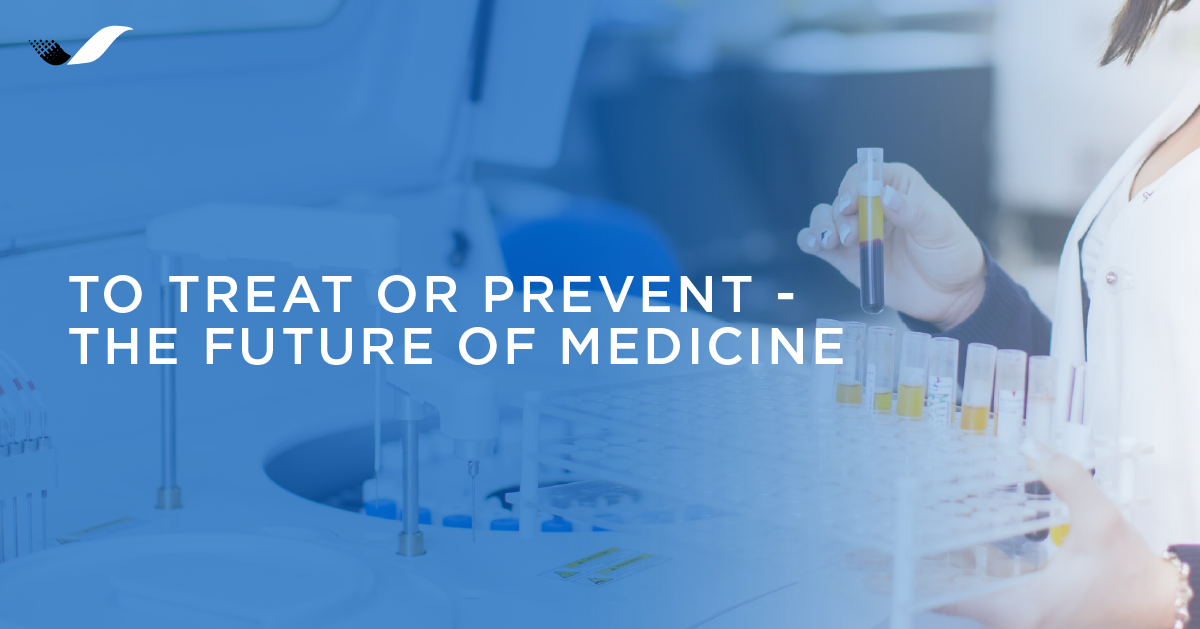Human beings have been practicing medicine in one form or another since we first began using tools. Until very recently, however, all approaches to medicine had one thing in common – they were reactive rather than preventive or predictive.
For example, thousands of years ago a physician might examine a person’s urine for smell, color or taste to determine the nature of the illness. With today’s advanced technologies, modern physicians can determine an amazing amount of information from a small blood sample. Not only can they determine various ailments currently in the body, they can also identify genetic factors that could lead to more serious health problems over time.
As a result, today’s sophisticated healthcare tools and technologies are changing medicine from a purely reactive endeavor to one that will increasingly become more predictive and preventive. Most of the advances in preventive care have occurred within the last 100 years. Throughout most of human history, medical examinations required subjective and/or inaccurate methodologies. Today’s technologies put precision and predictive power in the hands of ordinary people.
When used by highly trained professionals, current technologies can do amazing things. For example, by analyzing the DNA in blood samples taken in the early stages of pregnancy, physicians can determine the sex and genetic information of the fetus. They can also identify many genetic diseases, and in some cases, take preventive measures before the baby is born. From a health standpoint, this journey from guesswork to certainty and predictability represents one of the most important accomplishments in human history.
TREATMENT VS. PREVENTION: WHICH COMES FIRST?
Like most industries, medical care is driven to a large extent by economics. Currently, there is more money to be made in diagnosing and treating illness than by preventing it. This is especially true in developed countries with aging populations – such as the U.S. – where opportunities to focus on diagnosis and treatment abound. However, as the cost of treating illness continues to skyrocket, medical professionals and those in the healthcare insurance industry are investing more time, resources and money into developing preventive medicine tools and techniques.
Preventive medicine is now seen as a critical part of a long-term solution for controlling spiraling healthcare costs. Accordingly, researchers are continually striving to make new and existing diagnostic tools faster, cheaper, and more accurate. The more diagnostic tools can help physicians identify health problems before they occur, the more they can do to prevent them, thereby reducing the costs of treatment.
In particular, advances in our understanding of DNA and gene coding are enabling researchers to peer into the inner workings of the human body like never before. These advances are also opening the door to expand preventive medicine into areas that only a decade ago were considered the stuff of dreams. For example, thanks to improved speed, accuracy and read length, DNA sequencing will soon become as common and easy to use as a household pregnancy test. It may take a while for the cost to come down, but it won’t be too long before DNA sequencing will become an integral part of everyone’s health care.
Meanwhile, new diagnostic devices are being introduced to treat disease specificity. However, until these devices become safer and less costly than existing treatments, physicians are hesitant to adopt them. For example, when someone has a bacterial infection, the standard treatment involves prescribing broad spectrum antibiotics to attack the bacteria. Unfortunately, the antibiotics often have their own harmful effects on the body. Even so, this approach is deemed safer than sending a sample to a lab to identify the offending bacteria, which can take days or even weeks. Until the speed and cost issues of new diagnostic devices are resolved, traditional methods will remain the treatment of choice.
THE FUTURE OF DIAGNOSTIC TESTING
Researchers have made huge strides in understanding causes of disease states earlier than before. Yet, getting new methods adopted on a mass scale remains a challenge. Instruments are often expensive. Patient samples often require quick and delicate handling. Insurance companies may hesitate to pay for new technologies until the cost comes down. Developed countries may have the resources to pioneer medical advances, but developing countries have a long way to go before gaining access to new technologies.
Despite these challenges, the future remains bright for the medical field. Tests that once took days now take hours. Diagnostic instruments that require complex optical, fluid handling, motion control, and temperature cycling are becoming cheaper and easier to make. We have already seen technology advances such as pneumatic pumps flowing samples through microfluidic cartridges, magnets being used to separate diseased cells from healthy ones, and ultrasound energy used to break apart cells. At the same time, companies often struggle to justify the R&D investment in new technologies, especially in cases that offer no clear compensation route for prevention. However, the industry as a whole seems to be moving in the right direction, and companies continue to push the boundaries to gain footholds in new preventive market spaces.
The last 50 years have seen rapid technological advancement in many different areas of medicine – much of it beyond the realm of what was once considered impossible. Full genome tests in the womb and solar-powered diagnostic instruments in sub-Saharan African villages may soon become standard operating procedure. Your wearable device may soon have the ability to warn that you have contracted the flu before you have symptoms, so you can take measures to avoid spreading it.
Where will the medical technology be 50 years from now?
Given the current rate of technological change, no one can say with any degree of certainty. One thing we do know is that the myriad possibilities currently being pursued, and those not yet even dreamed of, will have a tremendous impact on the healthcare industry and global health.

